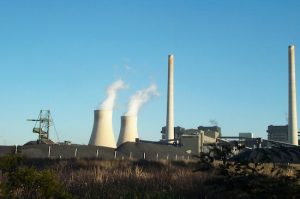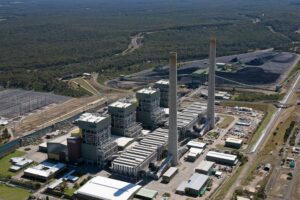(Given the discussions that will be held in Australia around the future of the Latrobe Valley with the Hazelwood brown coal generator almost certain to close within the next six months, this seems to provide food for thought).

In the same week that Germany’s economy minister, Sigmar Gabriel, ruled out a coal phase-out timeline until alternatives opportunities are in place for affected communities, Daimler broke ground on a major new electric vehicle battery factory 30 kilometers from the 1,500-megawatt Schwarze Pumpe power plant in the lignite mining heartland of Lausitz.
Gabriel last Tuesday said he saw no withdrawal from lignite, or brown coal, before 2040, saying that it was important first to come up with new business opportunities in regions that will bear the brunt of the transition.
The new battery factory is in the Lausitz region which straddles Saxony and Brandenburg.
We may have to wait a while for hard re-skilling opportunities in EV batteries for lignite miners and power plant operators. But Daimler’s investment at least acknowledges the possibilities of new economic activities in lignite-producing regions.
Battery manufacturing is a natural fit for Germany, a big automaker at risk of technology disruption from electric vehicles. The main investments in EV and battery capacity growth right now are in China, a fact that, industrially speaking, is reminiscent in Germany of U.S. carmakers’ long struggles with Japanese rivals.
Mindful of this, German officials other than Gabriel, including the environment minister, Barbara Hendricks, have already urged automakers to diversify from internal-combustion sales, which may wane within a decade.
So the Daimler commitment to building electric vehicles is welcome. The company’s subsidiary ACCUmotive on Monday began construction of a new battery factory in Kamenz, in Saxony, alongside an existing, smaller plant.
The €500 million investment will expand battery production capacities for Mercedes-Benz and Smart hybrid and electric vehicles. Daimler says the investment will double existing staffing of 500 people at ACCUmotive by 2020. That compares with the 7,500 people employed by the entire struggling lignite mining and power plant business in the region (a business recently sold by Vattenfall to Czech interests).
Why Saxony? While ACCUmotive’s research and development headquarters are in the Stuttgart area, its production is in Saxony, reflecting an availability of land and infrastructure, and an industrial past built not just on minerals (especially coal), but also on auto-making. Saxony was the location of Audi’s predecessor, Auto Union AG.
It’s too early to say that Saxony’s industrial and car-making heritage, coupled with Daimler’s announcement, will add up to Sigmar Gabriel’s “structural alternative” to lignite. But there are glimmers of a way forward.
Gerard Wynn is an IEEFA energy finance consultant. Source: IEEFA. Reproduced with permission.









